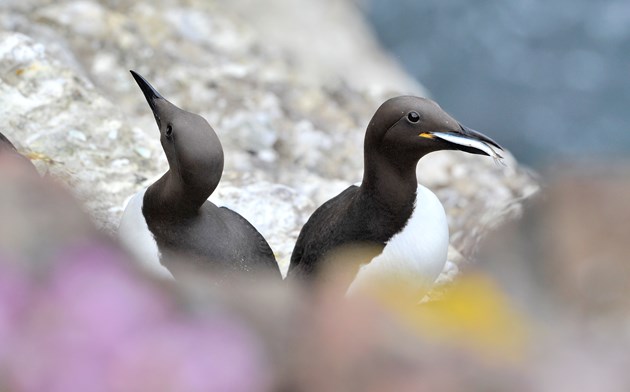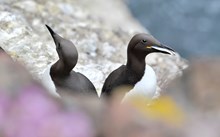21 February, 2020
Seabird declines may be slowing

The decline in Scotland’s breeding seabird numbers may be slowing down, a new report suggests.
The latest biodiversity indicator published by Scottish Natural Heritage (SNH) uses data largely collected by volunteers to look at numbers of 11 species of breeding seabird.
The results show that, having declined by more than 30% from 1986 to 2011, population levels have since remained fairly stable.
Overall numbers have declined by an average of 32% since 1986. Only two of the species have maintained or increased in breeding numbers over the period (common gull and common tern).
Arctic skua, whose breeding stronghold is the Northern Isles, has experienced the largest decline of 78%. Their decline has been linked to changes in the availability of sandeels, which has also affected Northern Isles populations of kittiwakes and terns. Declines are also apparent for herring gull and great-black backed gulls across Scotland.
While below earlier levels, there are signs of some populations such as guillemot and black-legged kittiwake stabilising, with some colonies showing increases.
Common tern and Arctic tern numbers increased since the last report. Terns are known to be highly variable in breeding numbers and it is too early to say if this trend is going to continue.
Seabirds are not only vulnerable to changes in the seas around Scotland, many migrate across the Atlantic and technology is beginning to improve our understanding of their movements.
Rats and American mink are predators to breeding seabirds and removing these from seabird colonies is a crucial step in securing Scotland’s seabirds for the future. Increases have been recorded at colonies where rats have been removed, such as the Shiants and Canna.
Simon Foster, SNH’s Trends & Indicator Analyst, said: “Seabirds are long-lived, for example the oldest guillemot in Scotland (and the rest of the UK) was recaptured on the Isle of Canna last summer being at least 41 years old. In Wales a razorbill was recorded at 42 years old, while a Manx shearwater has been found more than 50 years old.
“Clearly we need long-term data to really understand what is happening to different species, and the fantastic work by volunteers undertaking monitoring at colonies around Scotland is invaluable in providing us with a unique picture on these changes.”
A UK wide seabird census is also currently underway and the results from this will help to provide an overview on all of the species of seabirds breeding around Scotland. These surveys rely on volunteers and they are always looking for more people to help. If you would like to get involved in seabird monitoring please contact: SeabirdsCountCoordinator@jncc.gov.uk
ENDS
Media enquiries: Contact the SNH press office on 0131 316 2655 or snhmedia@nature.scot.
Contact information
- Name
- NatureScot Media
- Telephone
- 0131 316 2655
- media@nature.scot
Notes to editors
The full report is available to read here: https://www.nature.scot/scotlands-indicators-birds
NatureScot is Scotland's nature agency. We work to enhance our natural environment in Scotland and inspire everyone to care more about it. Our priority is a nature-rich future for Scotland and an effective response to the climate emergency. For more information, visit our website at www.nature.scot or follow us on X at https://x.com/NatureScot
’S e NatureScot buidheann nàdair na h-Alba. Bidh sinn a’ neartachadh àrainneachd na h-Alba agus a’ brosnachadh dhaoine gu barrachd suim a chur ann an nàdar. Tha e mar phrìomhachas againn gum bi nàdar na h-Alba beairteach agus gun dèilig sinn gu h-èifeachdach le èiginn na gnàth-shìde. Tha an tuilleadh fiosrachaidh aig www.nature.scot no air X aig https://x.com/NatureScot

